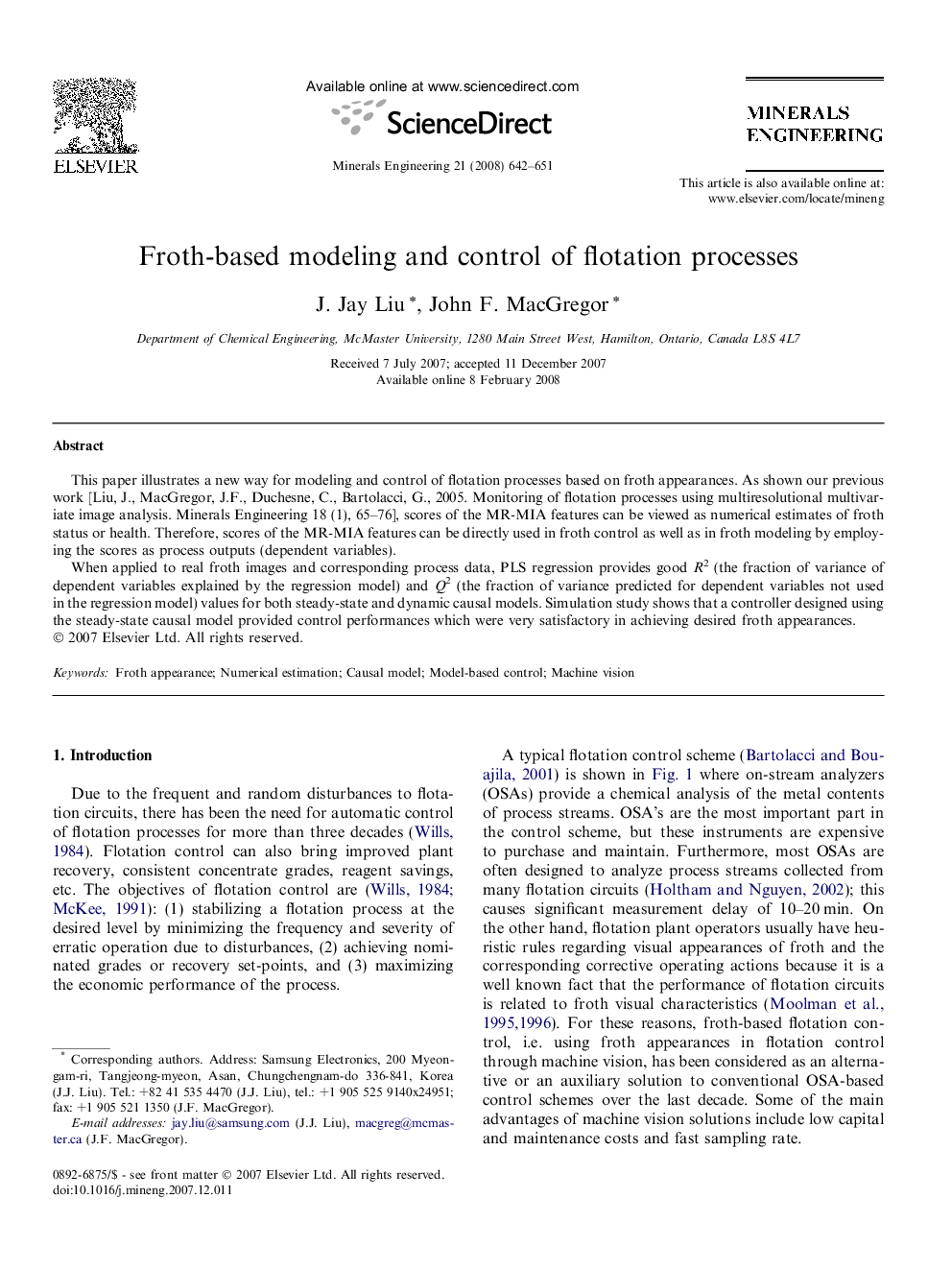| Article ID | Journal | Published Year | Pages | File Type |
|---|---|---|---|---|
| 234678 | Minerals Engineering | 2008 | 10 Pages |
This paper illustrates a new way for modeling and control of flotation processes based on froth appearances. As shown our previous work [Liu, J., MacGregor, J.F., Duchesne, C., Bartolacci, G., 2005. Monitoring of flotation processes using multiresolutional multivariate image analysis. Minerals Engineering 18 (1), 65–76], scores of the MR-MIA features can be viewed as numerical estimates of froth status or health. Therefore, scores of the MR-MIA features can be directly used in froth control as well as in froth modeling by employing the scores as process outputs (dependent variables).When applied to real froth images and corresponding process data, PLS regression provides good R2 (the fraction of variance of dependent variables explained by the regression model) and Q2 (the fraction of variance predicted for dependent variables not used in the regression model) values for both steady-state and dynamic causal models. Simulation study shows that a controller designed using the steady-state causal model provided control performances which were very satisfactory in achieving desired froth appearances.
